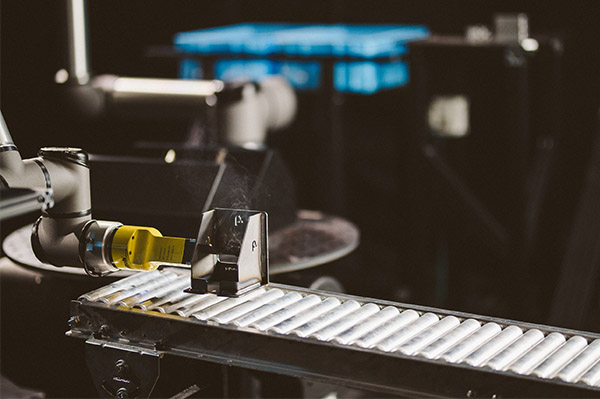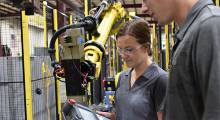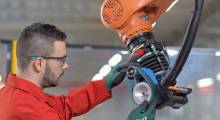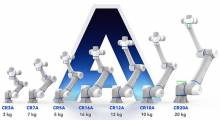Path Robotics Inc. announced its new Autonomous Fit-up, or AF-1, system for robotic welding this week at the FABTECH trade show in Chicago. The company claimed that the robotic cell, which can fit-up and weld metal parts, “marks a significant leap foward in the metal fabrication industry.”
“Today marks a significant milestone in the advancement of American manufacturing,” said Andy Lonsberry, co-founder and CEO of Path Robotics, in a release. “We are excited to publicly unveil a system we have been developing for years that we know will change the landscape of manufacturing for years to come.”
Columbus, Ohio-based Path Robotics said it builds robotic systems that use artificial intelligence, machine learning, and computer vision to provide flexibility and resilience to American manufacturers. The company raised more than $156 million in Series B and C funding in 2021.
AF-1 addresses demand for automated welding
The global market for robotic welding could expand from about $6 billion in 2022 to $15 billion by 2030 at a compound annual growth rate (CAGR) of 8%, according to Zion Market Research. Similarly, Market Data Library predicted a CAGR of 5.3% from $7.4 billion in 2022 to $11.78 billion in 2031.
In North America alone, the welding robot market could grow by 7% annually to $4.41 billion by 2032, said Report Ocean. All three research firms credited the Industrial Internet of Things (IIoT), Industry 4.0, and increasingly intelligent devices for making automated welding more attractive to manufacturers.
“AF-1 enables manufacturers to increase production throughput without the need for hiring fitters, welders, and programmers,” said Path Robotics.
The company said its technology uses proprietary computer vision and AI to autonomously pick, fit-up, and weld small parts. Manufacturers can simply load in raw components, hit “Go,” and come back to a batch of welded parts, it claimed.
AF-1 cells can run autonomously for hours with zero human intervention, said Path Robotics. As part of robotics-as-a-service (RaaS) offering, the company provides manufacturers with 24/7 production assistance via its Mission Control command center.
Early user praises Path Robotics; more customers to come
Hutchens Industries Inc. described itself as a leader in the design and manufacturing of spring suspensions and sliding subframes for the trailer industry. The Mansfield, Mo.-based company was an early partner for Path Robotics during the development of AF-1.
“We see the AF-1 cells as a way to continue to grow our company and to alleviate our labor gaps currently and into the future,” said Ty Hutchens, executive vice president and chief operating officer of Hutchens Industries.
Path Robotics said its robotic welding cell is now available, but it already has an order backlog into late 2023. The company said it is actively signing more innovative manufacturers to the platform.
Editor's note: For more about FABTECH, visit Robotics 24/7's special coverage page.
Article topics
Email Sign Up
















